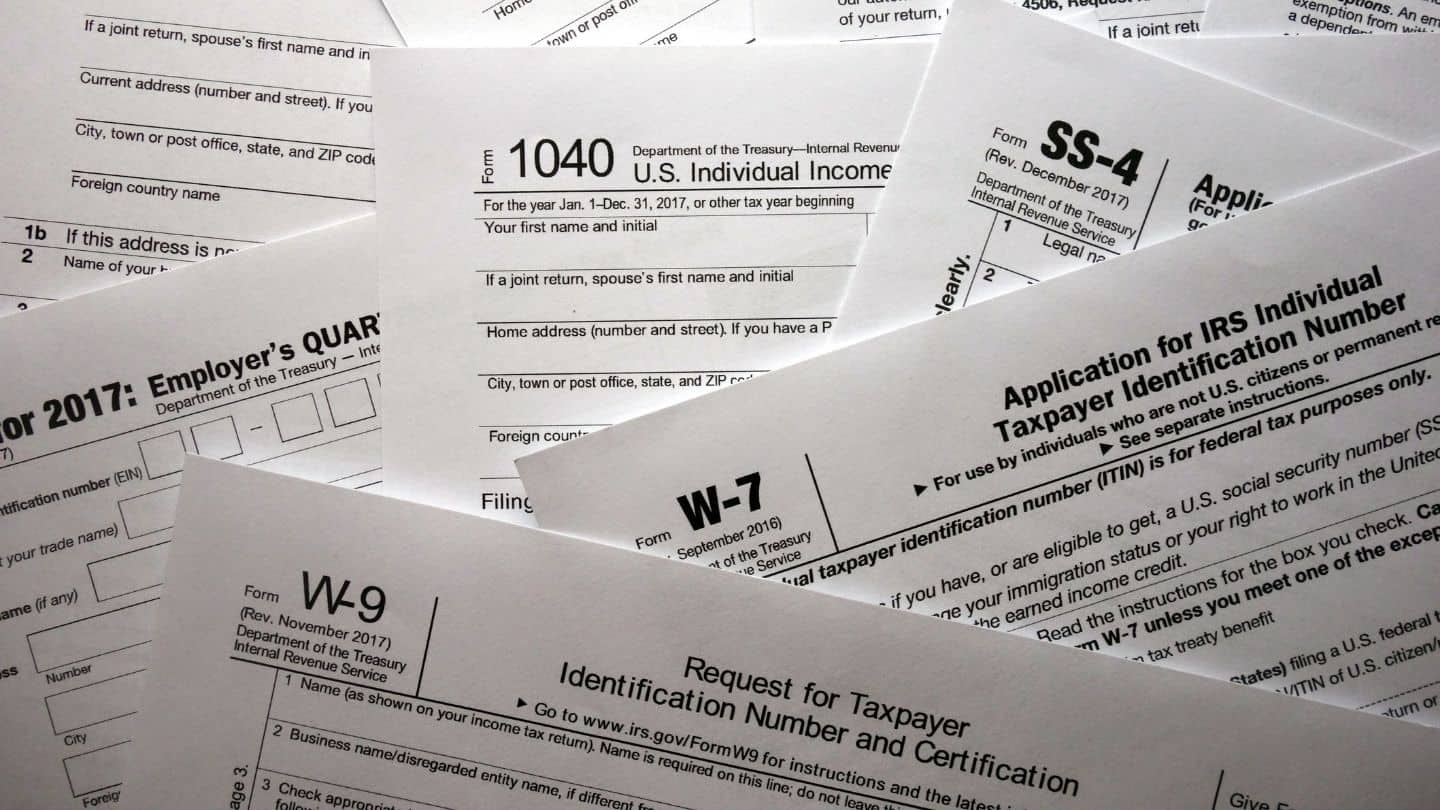
This post may contain affiliate links. By clicking on any of the links below, I may get a commission if you make a purchase at absolutely no additional charge to you. This helps offset the costs of running this blog & I appreciate your support. Please see my privacy & disclosure policy for more.
Table of Contents
With everything that has been going on lately, have you found yourself wondering (or trying not to) what is the best way to save for your child’s future? I know we have!
Today I want to talk about something I am passionate about… setting up a savings fund for our children’s financial security. Not only are you setting your child up for success in the future, but it’s also a great way to teach them financial literacy at an early age.
If you’ve been considering looking for an opportunity to start investing in your child’s future, researching these topics are the crucial first steps.
Best Way To Save For A Child’s Future: A Beginners Guide To Financial Planning For Your Kids
In this post, we are going to be taking a look at three well-established investment options for your child: Custodial IRA, an UTMA/UGMA, or a 529 College Savings plan. I am going to break down your long-term investment plan options and help you clarify the best way for you to save for your child’s future.
You may have heard of at least one if not all of these college savings options. But any of these investment opportunities can become the cornerstone of saving for your child’s future. And can help you decide how much you should save for a child.
While reading through this article, keep in mind, you can utilize any of these as a stand-alone, or even a combination, of financial instruments. They are designed to help beginners create long-term investment plans for their children.
Best Investment Plans For Children
So, let’s get to it! Let’s dive into these financial instruments and touch on the basics for the Custodial IRA, the UTMA/UGMA, and the 529 College Savings plan.
What is a Custodial IRA?
A custodial IRA of any type is simply money saved into an Individual Retirement Account from income earned by your child. As the term “individual” implies, there are no co-owners of retirement accounts so it is owned by your child. But governed by you or an assigned adult custodian.
I’m going to touch on the two most common IRAS’s that you can open for your child as a custodial account, the traditional and the Roth.

What is a Traditional IRA?
The Traditional Individual Retirement Account (IRA) was established in 1974 as a long term savings and investment vehicle for retirement, touted as a “personal pension plan,” with various tax advantages as an inducement.
A traditional IRA allows you to make pre-tax contributions and the investments in the account grow tax-deferred. In retirement, the owner (in this case your child) will then pay income tax on withdrawals.
What is a ROTH IRA?
The ROTH IRA specifically is another version of the Individual Retirement Account that was established in 1997 and named after a Delaware senator, William Roth.
The Roth IRA is very similar to a Traditional IRA with the most noticeable difference when it comes to taxes and being taxed!
The Roth allows you to contribute after-tax money in the investment account and therefore is not tax-deductible. The upside is, no matter how prosperous the account becomes, once you start withdrawing funds at retirement, the money is tax free!
What’s the biggest difference between Roth IRA vs Traditional IRA?

Taxes, taxes, and “less” taxes!? Here’s where it can get tricky, based on your child’s potential to earn as well as how much income you think he/she will have in retirement. However, I want to keep this post on the “lighter” side or at a beginner level. So let’s stick to a few key differences with a quick recap of the info above:
- With a Roth IRA you pay taxes on your income before you contribute to your account and then enjoy tax-free withdrawals later.
- With a traditional IRA you enjoy your tax advantage by taking deductions now and paying taxes on the withdrawals later.
(Prepare for an exciting caveat at the end of this paragraph)
You can think of it like this: If you choose to set up a Roth, it will function more like a regular investment account with fewer restrictions than the Traditional IRA with some tax benefits.
On the flip side, the Traditional IRA is set up to function more like a personal pension plan. You will receive considerable tax breaks with the Traditional IRA. But you will also deal with greater restrictions and rules for accessing the funds and when you have to take distributions.
Here’s the caveat: While that information reads correctly concerning the Roth IRA vs a Traditional IRA, we are talking about investing earned income on your child’s behalf. If your little one is talented or entrepreneurial and making an income, the implications of long-term savings and compounded interest are phenomenal! This can’t be stressed enough; the money in your child’s Custodial Roth IRA grows TAX-FREE for decades!
How do I open a Custodial Roth IRA for my children?
Opening a Custodial Roth IRA for your child is relatively easy. In order to qualify they must have earned income, just like an adult. A parent or guardian will open the account in the child’s name. And will require the child’s social security number as well as other basic information.
Check with your financial institution to see if they offer online services. I know Fidelity offers great information as well as a way to sign up online. The process is clear and easy to follow. If you’d like to check it out, here’s the link: https://www.fidelity.com/retirement-ira/roth-ira-kids
At What Age Can You Open A Custodial Roth IRA?
As long as your little one is earning an income, there is no lower age limit. Think of all those apple-cheeked babies and toddlers frolicking around on your TV screen… Those children get paid!

One last thing: How much money can my child put in a Roth IRA?
The current amount you can contribute to an IRA (of either or both types combined) is $6,000 max per year. Or up to the amount of your child’s total earned income*, whichever is the lesser amount.
If your child earns $3,500 in a year, that is the maximum amount allowable by law you can contribute to an IRA on your child’s behalf that year.. If they are industrious or determined to earn a greater amount than $6,000 this year, the contribution amount cannot exceed the $6,000 as that is the current Roth IRA Contribution limits for 2021.
( In 2020 IRA Contribution limits were $6,000 for children as long they earned that much. This will be the same for the 2021 tax year. And was also the same as the 2019 IRA Contribution limits. Just to be clear, this limit applies to the total combined contributions made each year across all of an individual’s traditional IRAs and Roth IRAs in the child’s name.)
*There are current income thresholds per individual that will rule out the use of a ROTH IRA. If your child is making that amount of money you will most likely need to consult a financial advisor.
What is a 529 savings plan?

A 529 plan is also referred to as the 529 College Savings Plan.
It was originally established in 1986 as a prepaid tuition plan by the Michigan Education Trust (MET). In 1996 the Internal Revenue Code (IRC) added Section 529 to authorize tax-free status for qualified tuition programs. These plans allow the earnings to grow on a tax-deferred basis. And if used in accordance with the plan rules for education expenses, the funds are federal income tax-free.
Are 529 plans worth it?
The best part about the 529 plan is that while your money is growing in this account, there aren’t any taxes due on the earnings. And the rules have become more flexible over time.
Not only can the money be used for college expenses at accredited schools, but the usage has also broadened to include up to $10,000 per year tuition expenses for kindergarten through grade 12 at private, public, or religious schools. In 2019 some apprenticeship fees and even student loan payments were added as qualified expenses.
Another nice advantage, depending on your point of view, is that unlike a custodial account where your child is the actual owner and can do as they please with the funds when they reach adulthood; the account owner keeps ownership of the account until the money is withdrawn for the named beneficiary.** As long as you withdraw money for qualified education expenses, that money is free from federal income tax.
**It’s important for you to note that with few exceptions, you can be assured the money will be used at your discretion for its intended purpose. Because your child, as the named beneficiary who also will become your “teen,” has no legal rights to the funds in a 529 account.
Who can open a 529 plan?
Anyone can open and fund a 529 savings plan. Whether you are a parent, grandparent, relative, and surprisingly even a friend can open a 529 savings plan and name a child as a beneficiary. Also to note, a student at 18 years of age is eligible to open and name his/herself as a beneficiary to take advantage of a 529 Savings Plan.
Custodial IRA vs 529
So as we’ve established, both of these accounts are designed to invest in your child’s future but have a few key differences. Both accounts are considered gifts, and therefore subject to gift taxation. A 529 has tax benefits when used for your child’s educational purposes. Most 529 accounts are run by state governments or school agencies. So there are more limitations on this kind of account than a custodial IRA. Costodial IRA’s are typically run by private institutions, or brokerage firms. And because they are not intended for education they do not hold the same tax exemptions as a 529 and are subject to income taxes.
One more advantage I’d like to highlight and then I’ll move on, is that these 529 plans have no annual contribution limits, age, or income limits unlike the Individual Retirement Accounts (Roth or Traditional) that we touched on above.
Now it’s time to circle back to an older, although somewhat less talked about, version of a custodial account, the UGMA, and its newer counterpart, the UTMA. These two custodial accounts, which can also be considered trusts as the deposits to these accounts are irrevocable, are getting almost as much air time recently as the Custodial IRA’s we discussed at the beginning.
What is a UGMA or UTMA account?

The Uniform Gift to Minors Act or UGMA was first established in 1956. And revised in 1966 as a custodial account that is typically controlled by a parent or guardian. The account will then transfer ownership to the minor/named beneficiary when he/she reaches the age of majority in their state, usually 21. But in some cases as early as 18 years of age and as late as 25 years old.
When you look into one of these custodial accounts for minors you’ll need to check the rules that apply to you as it varies by state.
What is the difference between a UTMA and UGMA account?
The main difference is what assets are allowed in the accounts.
A UGMA account has cash and other financial instruments managed by the custodian until the child assumes control of the account when he/she comes of age.
The UTMA allows a minor to receive gifts of real estate, inheritances, and other property like patents or fine art without the aid of a guardian or trustee. Remember as a donor you can be named custodian to manage and invest the property on behalf of your child until he becomes of legal age.
What is the main advantage of an UGMA UTMA account?
You’ll most likely find that there are two main advantages when it comes to using a UGMA or UTMA custodial account. First, these accounts make it easy for you to give financial gifts or assets to a child. Secondly, it follows that it avoids the need to incur expensive attorney fees to set up a special trust.
Another benefit of note is there aren’t any taxes on withdrawals since all contributions are after-tax assets. Keep in mind though since the Tax Cuts and Jobs Act in 2017, a minor’s unearned income over $2,100 is now taxed at the rate of estates and trusts.
Unearned income will include interest, capital gains, and dividends earned by any holdings in the child’s account(s). As the owner, this income will be reported under their social security number. .
If you have tax concerns, you might want to talk to your tax or financial advisor who understands your financial situation. Especially if you expect your child’s unearned income to surpass the threshold. There are other circumstances, such as if the child is a full-time student, as a parent you may be able to claim the income on your tax return. But this could also result in a higher tax burden.
Although this might seem a little daunting on your first read-through, look at it this way: if there is enough unearned income in your child’s accounts to impact taxes, yours or theirs, there is unearned income in your child’s investment accounts!! They are performing as they were intended, to make money for the future. Those initial steps you took on your child’s behalf by investing time, money, and research for their financial success is paying off!
UGMA, UTMA and Financial Aid
One final thought: Since UTMA and UGMA assets are owned by the child, they are currently counted against financial aid. The reality is that these custodial bank and brokerage accounts can reduce FAFSA-based financial aid significantly in most cases as the assets will be expected to contribute approximately 20% towards funding the students’ college expenses every year.
The current trend is to roll UGMA or UTMA account assets into a custodial 529 college plan which will reduce the impact of 20% on financial aid to about 6%.
Bottom Line: What’s The Best Way To Save For My Child’s Future? The Wonderful And Not So Wonderful Answer:

“Not” so wonderful first? There are so many financial instruments available to you and your child to plan for their future that it’s easy to start to become overwhelmed. When you first start researching beyond the few I touched on here you could feel the more you know, the more you don’t. The only “don’t” you need to worry about is don’t stop yourself from taking the first step!
The wonderful part: EVERY investor or parent took that same first step at some point because no one started out as an expert, NO ONE! Which means – you aren’t alone! We all have to start somewhere.
How Much Should I Save For My Child?
This isn’t a straightforward answer. The savings options available to you as parents on behalf of your family will change and grow just as your child will. It’s a process to start together. And as your child ages, it is a wonderful tool to help your child start to understand the power of interest and instituting good saving practices. It will also teach them a healthy respect for their money. And hopefully, keep them from ever having to worry about paying off debt.
Lastly, while there are so many college savings or retirement options out there, there are just as many great financial institutions available to help you with this type of planning and many offer several no-fee accounts.
If you take anything away from this article, let it be this, although some children do run before they walk, it’s always that first step that your child took towards you that we look back on with fondness and joy…once you take those first steps to help secure your child’s financial future and college opportunities, you’ll feel confident that you are providing one of the most priceless gifts… financial security.
